
On the 11th anniversary of the Fukushima nuclear accident
Current situation and work on the plant site
With regard to the condition of Units 1 to 3, there have been no significant changes in recent months - both in terms of temperatures and in the monitoring of radioactive material concentrations. Tepco is still busy with preparations for dismantling the units and recovering the fuel assemblies from the spent fuel pools of Units 1 and 2.
For example, the operator conducted a camera run inside the containment of Unit 1 at the beginning of February 2022. With the help of a remotely controlled underwater camera, information was to be obtained about the origin and quantity of the deposits, especially from the lower area of the containment. It is assumed that most of the molten nuclear fuel has leaked out of the reactor pressure vessel and is located at the bottom of the containment.
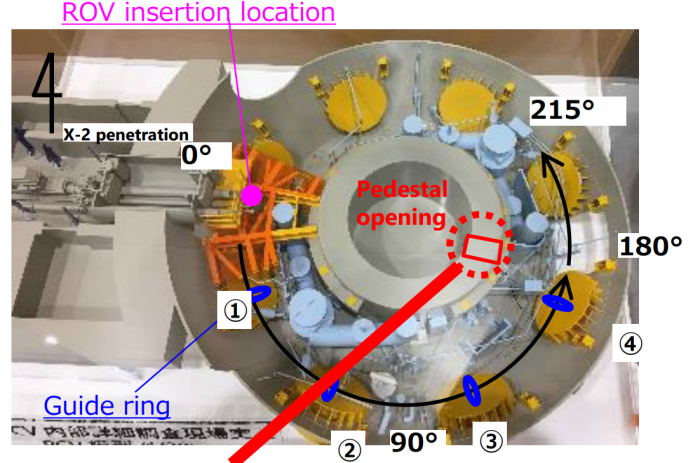
The recordings are essentially to serve the planning of future explorations, among other things by creating a three-dimensional map of the deposits. In this context, the dimensions of the deposits are also to be recorded and - with appropriate gripping tools - melt fragments collected. During further exploration runs, recordings are planned from the inside of the so-called control rod drive chamber, a working space underneath the reactor pressure vessel, where a large part of the melt is suspected to be located.
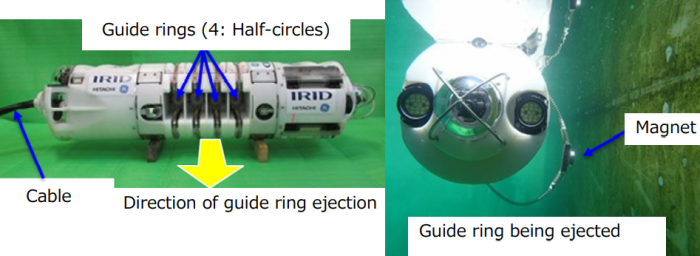
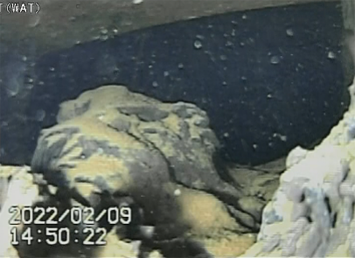
For the experts who accompanied the investigations on site - some of them were positioned outside the X-2 penetration (see Figure 1) - effective doses of up to 0.61 millisievert (mSv) on the first working day and 0.19 mSv on the second day were recorded. To put this into perspective: For nuclear power plant workers, an effective dose of 50 mSv/year or 100 mSv over five years is the legal limit in Japan. The level of the effective doses to workers at the plant site is published monthly on the website of the Japanese Ministry of Health, Labour and Welfare.
Since August 2021, tests and training have also been underway with and on the equipment that is to be used to salvage the nuclear fuel in the containment of Unit 2.
Plans for discharging the water stored on the plant site into the sea
An additional 140 m³ of contaminated water is still accumulating on the plant site every day and has to be stored in tanks. This is groundwater or groundwater inflow into the reactor buildings and turbine buildings as well as precipitation water, some of which also penetrates directly into the buildings. The contaminated water passes through a purification process in so-called multi-nuclide filter systems (ALPS Advanced Liquid Processing System) and is then stored in tanks on the plant site. During the purification process, most of the radioactive substances can be removed from the water - except for the tritium - so that, according to Tepco, the official requirements in this regard are fulfilled. However, Tepco also states that the concentrations of some substances are still above the legal limits in some cases and that this ALPS water must be purified again. There are now more than 1,000 storage tanks on the plant site, holding a total volume of water of around 1.3 million cubic metres.
In April last year, the Japanese government agreed to the of discharge diluted water into the sea if the amount of radionuclides was below the legal limits. This excludes tritium. In August of the following year, the law was passed. Tepco then submitted a corresponding application to the Japanese Nuclear Regulation Authority at the end of December 2021. Among other things, the application includes considerations on the design and construction of the plants in which the purified water is first to be diluted with seawater. The mixture is then to be discharged from the coast into the open sea via a tunnel about one kilometre long on the seabed (see Figure 5). In the licence application, Tepco commits to the authority to keep the tritium concentration in the diluted discharged water below 1,500 becquerels per litre (Bq/l). For comparison: The World Health Organisation specifies 10,000 Bq/l as the guideline value for tritium in drinking water.
The total amount of tritium at the Fukushima Daiichi site is reported to be about 780 terabecquerels. Tepco plans to keep the total annual amount of tritium discharged below 22 terabecquerels. By comparison, tritium discharges (liquid) at the La Hague nuclear site in France, for example, are reported to be around 11,400 terabecquerels for 2018.
In preparation of the discharge, Tepco has simulated the discharge of ALPS water from three different tanks into the sea. Tepco has also started investigations of the geological subsurface in the area of the planned pipelines on the seabed. In February 2022, agitators were also used on a test basis in some tanks to disperse the nuclides within the storage tanks in order to be able to determine the radioactivity concentration more precisely.
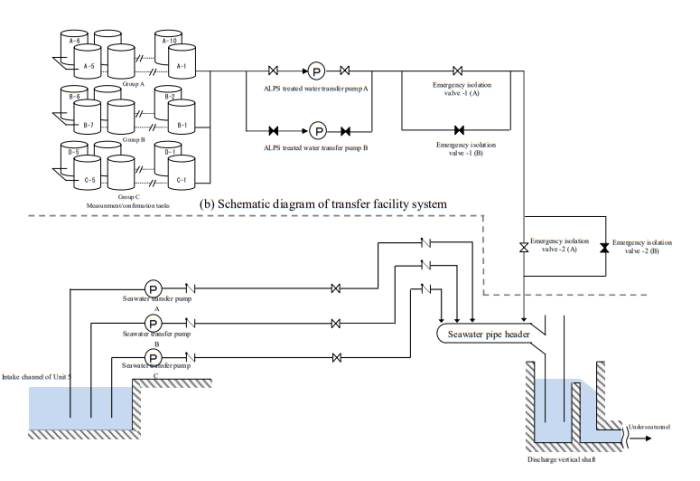
Investigations into the radiological effects of the planned discharge
Tepco has also conducted studies on the radiological effects of the discharge of the tritium water on humans and the environment. The calculations for this are based on the specifications of the International Atomic Energy Agency (IAEA) and the International Commission on Radiological Protection (IPRC).
To determine the annual effective dose, an individual was assumed who, among other things, eats seafood from the region and spends a certain number of hours a year on the coast and at sea in the vicinity of the discharge area. According to the calculations, this individual would be exposed to an additional effective dose of between 0.000017 and 0.0021 mSv per year as a result of the discharge. By way of comparison, a flight from Munich to Japan would result in up to 0.1 mSv. Simulations of the distribution of tritium in seawater also showed that the area where the tritium concentration in the surface layer is higher than the current values in the surrounding sea area (0.1 - 1 Bq/l) is limited to about two to three kilometres around the power plant site (see Figure 5).
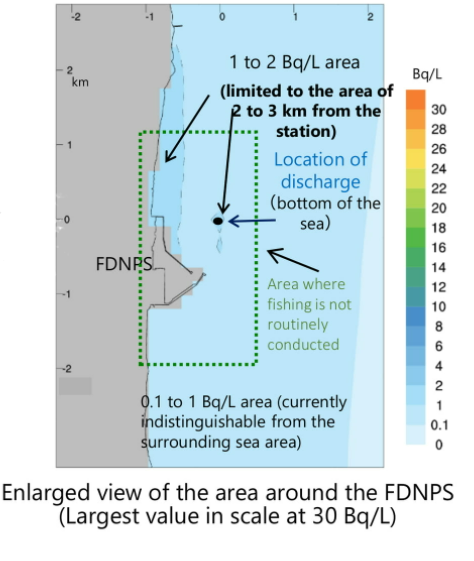
Task Force of the IAEA
In connection with the planned discharge of ALPS waters into the sea, members of a task force of the International Atomic Energy Agency (IAEA) visited the power plant site in mid-February 2022 to inspect the ALPS facility and sampling. The task force was established in September 2021 to monitor the process surrounding the discharge of the water at Japan's request. Accordingly, the task force will review the safety-related aspects of the water discharge process in addition to the radiological characterisation of the water to be discharged. Another focus will be on environmental monitoring in connection with the discharge. Regulatory control, including licensing, inspection, verification and assessment, will also be accompanied by the IAEA experts. The measuring results of the ALPS water in the storage tanks will also be checked in IAEA laboratories. In addition to IAEA staff, the task force consists of eleven international experts.